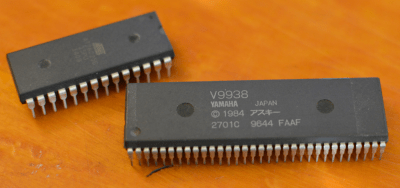For a very long time, the original, 11 foot-long on-screen model of the USS Enterprise from Star Trek the original series – “NCC one seven O one. No bloody A, B, C, or D.” – was housed in the Smithsonian’s Air and Space Museum in Washington, DC. Recent visitors may have noticed the Enterprise is no longer on display. It’s being restored by the finest aircraft conservators in the world. There are a few great videos showing off how much goes into restoring a cultural icon.
Last weekend Hackaday visited Sparklecon in Fullerton, CA. This means I was in LA on the last Saturday of the month. What’s so special about that? The W6TRW Swap Meet at Northrop Grumman in Redondo Beach. Here’s the pics from that. The best thing I found? A wooden acoustic coupler modem for $15. Once I told the guys at the booth what it was, the price went up to $20. Still worth it.
What’s the worst thing about modern computers? They’re all LCDs, and that means worse resolution, terrible colorspace, and monitors that are very, veeeerrrrryyyy wide. The consequence of this is a complete and total lack of screen savers. Never fear, because the flying toaster is back, this time as an SD card holder. It’s 3D printable, so if you have some white, silver, and black filament sitting around, you know what to do.
The USB Killer hit the tips line a few times this week for inexplicable reasons. We’ve seen it before, but we haven’t seen it again. Surprisingly, no one – outside a bizarre Indiegogo campaign that shouldn’t exist – has made their own USB killer. Here’s your call to action: build a USB killer, and I’ll test it out.

There’s more variety to your standard DIP-packaged chips than you might expect. The weirdest of these – at least when it comes to perfboard construction – is the SDIP, or Skinny Dual In-line Package. Instead of having a standard 0.1″ pitch between leads, the SDIP has a 0.070″ pitch. [Chuck] was having some problems looking for SDIP to DIP adapters until he found this amazing trick the connector companies don’t want you to know about. Just plop the chip in at a 45º angle, bend a few pins, and you’re good to go.












